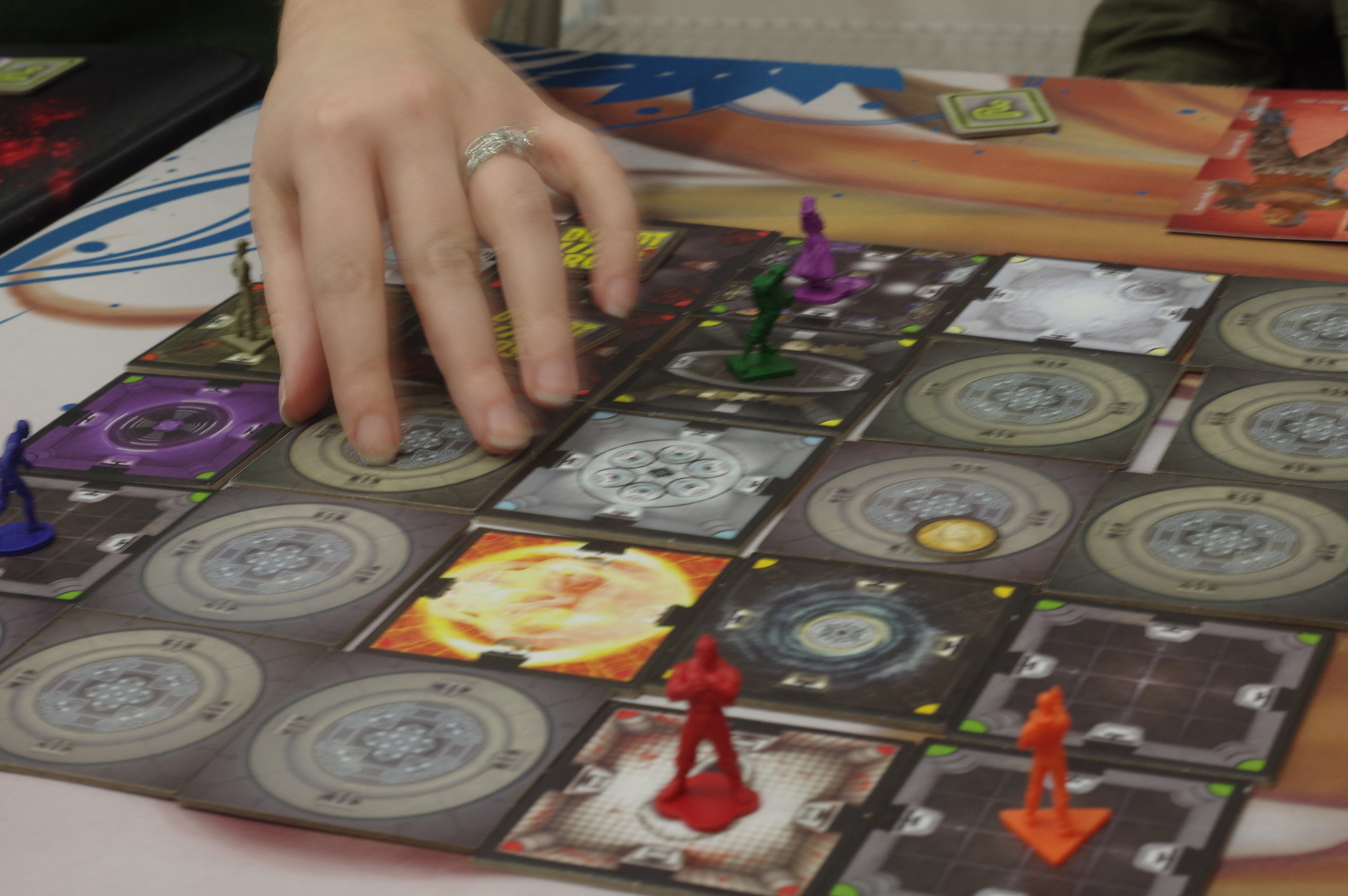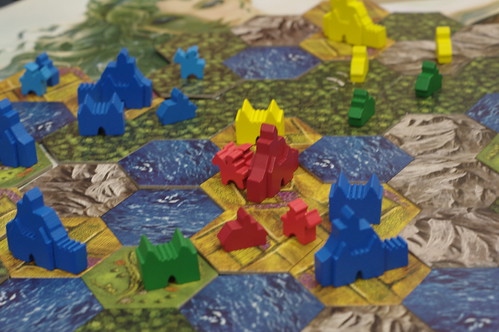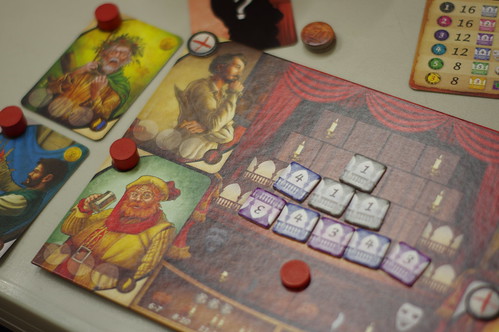I'm eligible this year to nominate for the Hugo awards. And, as I'm a WorldCon member for this year, I'll be eligible to vote in the awards, as well. And nominate next year.
But that Puppy Thing has reared its ugly head again, so I have little or no hope that my nominees will be on the final ballot, which in several cases is a crying shame.
I'm still reading books published last year and consuming as much media as I can to prepare for the nomination process - I have until the end of March, according to
the nominations page. And I'm following a
ton of blogs that have posted lists of eligible works. One of the best sources I've found is
this blog post, which links to a bunch of sites and lists that are open to all (not just Puppy nominees and not just anti-Puppy nominees).
As I said last year, if your argument is "We didn't break any rules," then you're being an asshole
and you know it. But I also understand the Puppy perspective. The Hugo Awards have not (for a very long time) reflected
sales. So why aren't the popular books winning awards?
And, to me, it reminds me of gaming. Because "fun" and "good" are (all too often) two separate and distinct things. I love
Tigris & Euphrates, but it is not a fun game. It's very good, but
something is missing in that "fun" equation.
But why
aren't the "fun" books winning? Prior to last year, I suspect that they didn't win because the "fun" books are more the territory of the casual reader, and the casual reader is less-likely to spend money to nominate and/or vote on an award.
It's like the Oscars. For
years. I would clear my schedule for Oscar Sunday, and I'd sit and I'd watch the awards. They recognized the best of the best! And then in 2000,
Gladiator won Best Picture. I was aghast. Yes, I enjoyed the film, but at least three of the other four nominees that year were (in my opinion) better films.
Somewhere along the way, I had become a film snob. Because I had really enjoyed
Gladiator when I saw it in the theater, even though it was cliche-ridden and very thin story-wise with characters that were actually fully developed. I still think
Chocolat and
Crouching Tiger, Hidden Dragon were both better films.
That's not to say "Good" and "Fun" are mutually exclusive. There are a number of books that are both good
and fun. But all too often, the books I read for pleasure are
not good books. And I freely admit this. I tend to call them "popcorn" books, because that's how quickly I get through them.
Last year, at Hugo nominating time, the Puppies mobilized their forces, and there were record numbers of nominators. They managed to completely shut out five categories - it would have been more, but a number of authors withdrew rather than be on the list due to the actions of the Puppies.
... and yet in nearly a third of the categories, "No Award" was given, as anti-Puppy voters protested categories which were 100% filled with Puppy nominees. Categories with four Puppy nominees and one non-Puppy nominee all went to the non-Puppy, too. In fact, the only Puppy winner was
Guardians of the Galaxy - and it would almost certainly have won even without Puppy intervention.
It's worth noting at this point that there are two Puppy factions. There are the "
Sad Puppies" and there are the "Rabid Puppies." When No Award was given in so many categories, the Sad Puppies were sad and the Rabid Puppies rejoiced. Because the Rabid Puppies were going to declare a win regardless of what happned, and "No Award" represented the community turning on itself.
It was a mess. It was ugly and it split the SF/F fandom community.
Now I'm not saying that the Puppy nominees didn't deserve to be there. I'm not saying that
at all. I read a ton of bad SF/F. And I really enjoy it. But I've always been able to distinguish Good from Fun, at least in my own mind. And many of the Puppy nominees
weren't good. They featured unchanging cardboard characters in cliche-riddled plots and situations, and - all too often - guns were the answer.
The Puppy situation, by the way, is a large part of why I'm going to WorldCon again this year. Because the Hugo process requires two successful votes to change.
Someone introduced at Sasquan/WorldCon last year an amendment to the process called "
E Pluribus Hugo" (EPH) (PDF link). It'll decrease the impact of slates and slate voting. And the proposal passed last year. To become the new rules, it'll need to pass again this year.
So how does EPH work?
The current system has everyone nominating up to five eligible works. Those are then accumulated, and the top five vote-getters become the final nominees.
Assume there are two slots on the final ballot for this example:
If I only nominate
City of Stairs (which was eligible last year), my wife nominates
City of Stairs and
The Three-Body Problem, and you nominate
The Three-Body Problem and
The Goblin Emperor, then
The Three-Body Problem has three votes,
City of Stairs has two votes, and
The Goblin Emperor has one vote. It's clear what the top two nominees will be.
Under EPH, each nominator has one vote. Nominating multiple works splits that vote. So in the example above, my nomination for
City of Stairs gives it one vote. My wife's nomination gives half a vote to
City of Stairs and
The Three-Body Problem, and your nomination gives half a vote each to
The Three-Body Problem and
The Goblin Emperor. This means that
City of Stairs would have 1.5 votes,
The Three-Body Problem would have 1 vote, and
The Goblin Emperor would have .5 votes.
Then EPH goes a step further. Assume that
The Goblin Emperor was then knocked out of contention. At this point, rather than your having wasted part of your vote, your vote is re-distributed among your "surviving" nominees. So your .5 vote for
The Three-Body Problem now becomes a full vote for that work. This means that
City of Stairs now has 1.5, and
The Three-Body Problem now has 1.5.
If there's a tie for points, the tied entrant that appears on the fewest ballots disappears, so voting for more things is still useful and a good idea.
With small numbers (three books, three voters, two slots on the final ballot), we're going to see very similar final outcomes. But when dealing with larger numbers of potential nominees and voters, it makes slates less effective. It means that slates like the Puppies are still pretty much guaranteed
one slot per category on the final ballot, but it's nearly impossible to completely flood the ballot box with only your candidates.
It levels the playing field in a not-unfair manner. Because some people
do conflate "good" with "fun" -
and that's not a bad thing. There is no reason for the Hugos to shut out people with different perspectives, either via the nominations process
or via the voting process.
Last year,
we all lost. Except the hatemongers in the Rabid Puppy camp. The non-Puppies lost because the Puppies silenced them during the nomination process, and then the Puppies lost when the anti-Puppies voted a strict non-Puppy slate.
By the way: I read most of the nominees and voted my conscience. In the Best Novel category, for example, I voted for
Ancillary Sword followed by "No Award" in the Best Novel category, because I found
The Three-Body Problem to be dull and the other nominees were split between "poorly written" and "too cliched." And Dresden. I'd stopped reading the series long before
Skin Game because I grow tired of the invulnerable protagonist. When the series is "The Dresden Files," it's a pretty good guess that Harry Dresden is going to be around for most (if not all) of them. And I usually just can't read single-protagonist series after about five or six books.
The Wheel of Time was an exception - it's one book that's about six million pages long. And - by the way - I still haven't finished it.
But voting on EPH is the
only reason I'm going to WorldCon this year. Yes, I'm going to some panels. Yes, I'm going to have a good time. But I'm going to the business meeting so I can vote like I did last year.
The meeting was a crazy zoo last year, too, by the way. Filled with tons of procedural questions as everyone used every trick they had in the book to do ...
something. There were some jaw-dropping moments for me, too. Like the gentleman who claimed that one year of Puppy-dominated slates was a
statistical anomaly that was unlikely to happen again.
The video of the meeting is well-worth watching, even though there are some long slow dull parts.
I ... I kinda can't wait.



